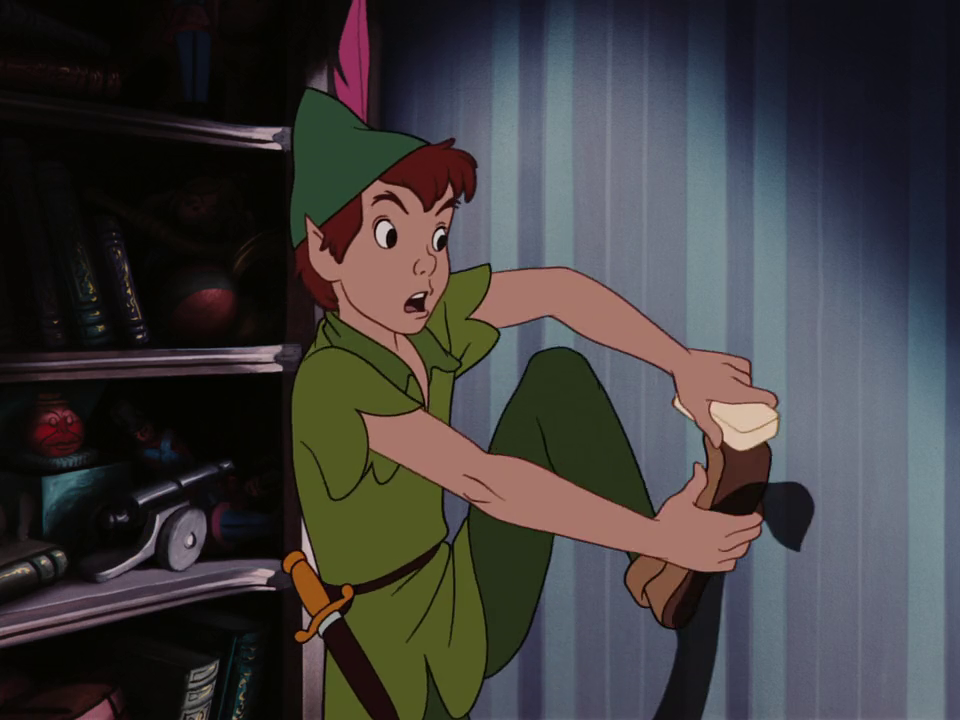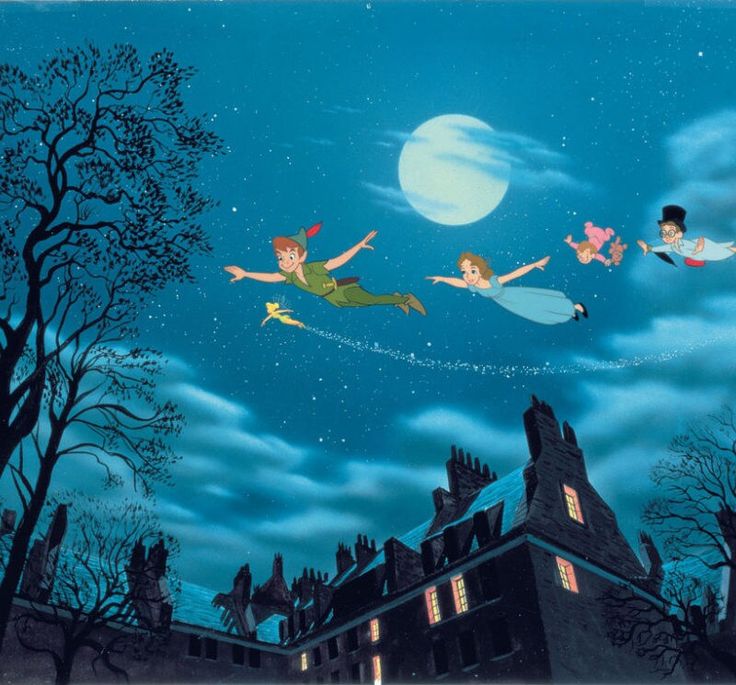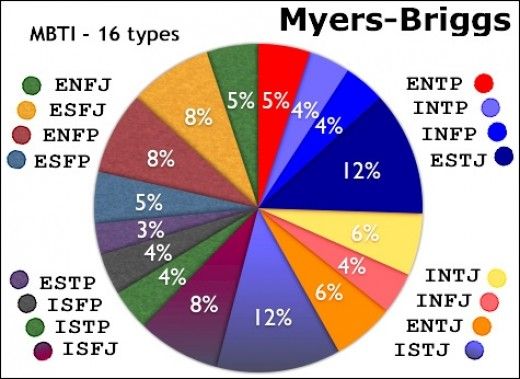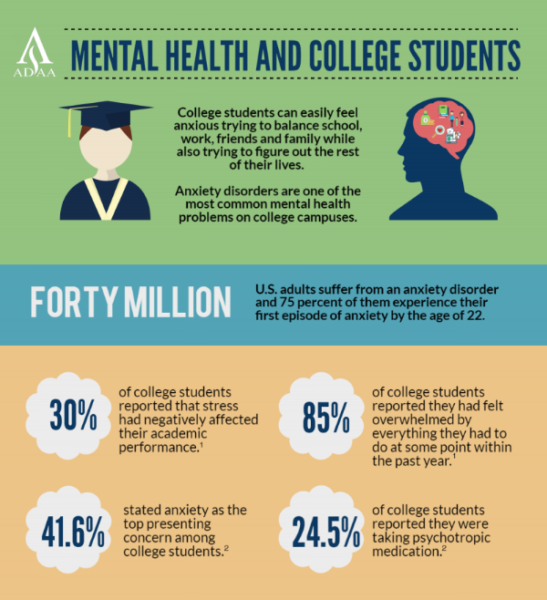Peter pan complex
Signs and Behaviors of the 'Eternal Boy'
The boy who never grows up: With the challenges of adulthood, it sounds like a dream, right? For some, it’s an actual way of life.
We all have days when we want to throw our to-do list in the trash. As a collective, we’re overworked, overstimulated, and, at times, “over it,” in general.
But if a laissez-faire lifestyle is interfering with your work, relationships, or other obligations, Peter Pan syndrome — also known as Peter Pan complex — may be involved.
Peter Pan syndrome isn’t a formal diagnosis in the Diagnostic and Statistical Manual of Mental Disorders, 5th edition (DSM-5).
However, some psychologists do recognize it as a pattern of behaviors that reflects someone is persistently unwilling or unable to accept adulthood responsibilities.
The term was first coined in 1983 by psychologist Dan Kiley in his book, “The Peter Pan Syndrome: Men Who Have Never Grown Up.”
And who’s Peter Pan?
That would be author J. M. Barrie’s famed protagonist in his 1911 novel “Peter Pan and Wendy,” a tale of an unaging boy who shirks responsibility in favor of adventures with his friends, the aptly named Lost Boys, in a paradise called Neverland.
Signs and symptoms of Peter Pan syndrome may exist on a spectrum, from mild to severe. They also tend to be persistent across situations and over time, instead of sporadic occurrences. Signs and symptoms may significantly interfere with relationships and occupational activities.
These signs may include:
Personality- adventurous
- carefree attitude
- undetermined life and career goals
- low emotional maturity and emotional intelligence
- spontaneous or impulsive behavior
- blaming
- emotional outbursts
- employment challenges
- difficulty managing finances
- procrastination
- spending time with similar peers
- uncomfortable with commitment
While Peter Pan syndrome isn’t considered a personality disorder, researchers have noted some overlapping traits with narcissistic personality disorder.
Examples of Peter Pan complex
- You rely on your partner to walk the dog, go grocery shopping, and clean all the time.
- You hide bills in a drawer for “later,” even when past due.
- Dishes and laundry pile up until you have no clean items left.
- You enlist family members or friends to make difficult phone calls on your behalf.
- You jump from one short-lived relationship, or job, to the next, and this doesn’t distress you.
- You may often engage in some activities that put you and others in hazardous situations.
- You actively avoid responsibilities.
- You significantly miss your teen and young adulthood years, and constantly try to recreate them.
Experts haven’t settled on why Peter Pan syndrome occurs, but it’s likely a combination of factors. These include:
Parenting styleA 2019 paper suggests acting like Peter Pan stems from a lack of bonding with a maternal figure in early childhood.
Other possibilities include:
- permissive parents who had a difficult time setting boundaries or consequences
- overprotective or helicopter parents who took care of all your needs for you
- parents who “rescued” you from responsibilities or mistakes
- parents with abusive behaviors who forced you to grow up too quickly
Avoidant attachment style
This attachment style is characterized by a fear of emotional intimacy.
“When someone sees commitment as boring, losing control, or disempowering, you can see how a Peter Pan mentality can take hold,” says Jacqueline Connors, a psychotherapist in Napa Valley, California.
Peter Pan complex is more common in men, although women can also develop it, Connors explains.
“This is because women tend to have a need to nurture and take care of things for people at an early age,” she says. “However, a woman can have the ‘Cinderella mindset.’ This is an expectation to be rescued and taken care of by a mature adult. ”
”
You fell in love for a reason. In fact, some of these traits may be endearing to you.
“This can actually have some strengths to it,” says Lauren Cook, PsyD, a therapist based in Los Angeles, California. “Chances are, what drew you to someone with Peter Pan syndrome was their lightheartedness, love for life, and sense of adventure.”
Of course, too much of a good thing can sometimes hurt.
“Unfortunately, everyone has a shadow side, and Peter Pan is no exception, as you’ll recall in the story,” she adds.
If you feel unsupported, frustrated, or ready to get serious, here’s how you can manage the situation.
Be compassionate
If terms like “man child” are any indication of how society feels about those with Peter Pan syndrome, it isn’t good.
Try not to contribute to the stigma and have compassion for your partner. Right now, they may lack the tools to form healthy interdependence, but change is possible.
Communicate your needs
You can be kind and firm at the same time. Just like Wendy confronts Peter Pan in the story, try not to be afraid to advocate for your own feelings, needs, and desires.
Just like Wendy confronts Peter Pan in the story, try not to be afraid to advocate for your own feelings, needs, and desires.
Set boundaries
Consider evaluating your to-do list. With love, you can let your partner know you’ll be handing off some tasks, but not all of them.
Try gifting them the opportunity to take care of chores, finances, and other obligations.
Be realistic
If your partner refuses to take action, you may want to reevaluate the relationship.
If you stay, it may be necessary to adjust your expectations. You may have to accept that you can’t change or “fix” them; they must be willing to change on their own.
Take care of you
When your partner’s needs are front and center all the time, it can be draining.
Try journaling, talking with a friend, or working with a therapist to refill your own cup.
Wendy syndrome
Though “Wendy syndrome” was introduced as a term for women who enable Peter Pan behavior, it applies to any gender.
It can include a partner, friend, or caregiver, says Matt Glowiak, PhD, a licensed clinical professional counselor in Bolingbrook, Illinois.
“Oftentimes, those demonstrating Wendy syndrome are unaware that they are enabling,” he says. “Rather, they believe they are being supportive. In some cases, they even enjoy caring for the other person — believing that it is their responsibility.”
Be mindful, though, says Glowiak: Sometimes the Wendy-and-Peter dynamic can cause two people to become stuck in an unhealthy or codependent dynamic.
The allure of never growing up is understandable. But if you’re ready to explore a different avenue, here’s how to navigate change.
Be honest with yourself
Try taking inventory and consider these questions:
- Why do I feel this way?
- What did I learn in childhood about adulthood?
- Are my actions helping or hurting me in the long term?
- Who is taking the burden of responsibility for me?
- What’s one area I can start “owning” in my life?
Build distress tolerance
You know what they say: We must feel it to heal it.
“Lean into the discomfort of settling in,” Cook says. “It can feel unnerving to sit with our relationships and our feelings, rather than run away from them. Practice leaning into boredom and familiarity. You may see that there is actually comfort that comes with long-term connection.”
Find support
It may be challenging to make progress on your own. Consider reaching out to someone for support.
A therapist can help you identify patterns, reframe your situation, and teach you coping skills for life’s ups and downs.
Some people do and some don’t. But, more often than not, some intervention is needed.
“Though we all continue to age with every passing second, it is not time itself that leads toward change,” Glowiak says.
“Rather, awareness of the issue and concerted effort will help someone work through this,” he says.
Adulthood presents many unique challenges. It’s natural to occasionally long for younger years with fewer cares.
But if you actively live to skip responsibility, you may be dealing with what some call Peter Pan syndrome.
Although not a formal mental health diagnosis, this pattern of behaviors is possible in some people.
As psychology professor Jordan Peterson explains in a popular lecture, Peter Pan reminds us of the perils and pitfalls of adulthood.
Peter Pan’s closest example of a grown-up, Captain Hook, is a tyrant desperately trying to fend off an unrelenting crocodile — a metaphor for time, the great equalizer of us all.
While you may not have a ruthless reptile at your doorstep, you likely have bills, appointments, emails, voicemails, children, aging parents, and, now, a pandemic.
Learning to face it all, perhaps with the help of a trusted professional, can allow you to integrate the best parts of youth with the wisdom, and reward, of growing up.
As J.M. Barrie, Peter Pan’s creator, famously penned, “To live will be an awfully big adventure.”
Signs and Behaviors of the 'Eternal Boy'
The boy who never grows up: With the challenges of adulthood, it sounds like a dream, right? For some, it’s an actual way of life.
We all have days when we want to throw our to-do list in the trash. As a collective, we’re overworked, overstimulated, and, at times, “over it,” in general.
But if a laissez-faire lifestyle is interfering with your work, relationships, or other obligations, Peter Pan syndrome — also known as Peter Pan complex — may be involved.
Peter Pan syndrome isn’t a formal diagnosis in the Diagnostic and Statistical Manual of Mental Disorders, 5th edition (DSM-5).
However, some psychologists do recognize it as a pattern of behaviors that reflects someone is persistently unwilling or unable to accept adulthood responsibilities.
The term was first coined in 1983 by psychologist Dan Kiley in his book, “The Peter Pan Syndrome: Men Who Have Never Grown Up.”
And who’s Peter Pan?
That would be author J.M. Barrie’s famed protagonist in his 1911 novel “Peter Pan and Wendy,” a tale of an unaging boy who shirks responsibility in favor of adventures with his friends, the aptly named Lost Boys, in a paradise called Neverland.
Signs and symptoms of Peter Pan syndrome may exist on a spectrum, from mild to severe. They also tend to be persistent across situations and over time, instead of sporadic occurrences. Signs and symptoms may significantly interfere with relationships and occupational activities.
These signs may include:
Personality- adventurous
- carefree attitude
- undetermined life and career goals
- low emotional maturity and emotional intelligence
- spontaneous or impulsive behavior
- blaming
- emotional outbursts
- employment challenges
- difficulty managing finances
- procrastination
- spending time with similar peers
- uncomfortable with commitment
While Peter Pan syndrome isn’t considered a personality disorder, researchers have noted some overlapping traits with narcissistic personality disorder.
Examples of Peter Pan complex
- You rely on your partner to walk the dog, go grocery shopping, and clean all the time.

- You hide bills in a drawer for “later,” even when past due.
- Dishes and laundry pile up until you have no clean items left.
- You enlist family members or friends to make difficult phone calls on your behalf.
- You jump from one short-lived relationship, or job, to the next, and this doesn’t distress you.
- You may often engage in some activities that put you and others in hazardous situations.
- You actively avoid responsibilities.
- You significantly miss your teen and young adulthood years, and constantly try to recreate them.
Experts haven’t settled on why Peter Pan syndrome occurs, but it’s likely a combination of factors. These include:
Parenting styleA 2019 paper suggests acting like Peter Pan stems from a lack of bonding with a maternal figure in early childhood.
Other possibilities include:
- permissive parents who had a difficult time setting boundaries or consequences
- overprotective or helicopter parents who took care of all your needs for you
- parents who “rescued” you from responsibilities or mistakes
- parents with abusive behaviors who forced you to grow up too quickly
Avoidant attachment style
This attachment style is characterized by a fear of emotional intimacy.
“When someone sees commitment as boring, losing control, or disempowering, you can see how a Peter Pan mentality can take hold,” says Jacqueline Connors, a psychotherapist in Napa Valley, California.
Peter Pan complex is more common in men, although women can also develop it, Connors explains.
“This is because women tend to have a need to nurture and take care of things for people at an early age,” she says. “However, a woman can have the ‘Cinderella mindset.’ This is an expectation to be rescued and taken care of by a mature adult.”
You fell in love for a reason. In fact, some of these traits may be endearing to you.
“This can actually have some strengths to it,” says Lauren Cook, PsyD, a therapist based in Los Angeles, California. “Chances are, what drew you to someone with Peter Pan syndrome was their lightheartedness, love for life, and sense of adventure.”
Of course, too much of a good thing can sometimes hurt.
“Unfortunately, everyone has a shadow side, and Peter Pan is no exception, as you’ll recall in the story,” she adds.
If you feel unsupported, frustrated, or ready to get serious, here’s how you can manage the situation.
Be compassionate
If terms like “man child” are any indication of how society feels about those with Peter Pan syndrome, it isn’t good.
Try not to contribute to the stigma and have compassion for your partner. Right now, they may lack the tools to form healthy interdependence, but change is possible.
Communicate your needs
You can be kind and firm at the same time. Just like Wendy confronts Peter Pan in the story, try not to be afraid to advocate for your own feelings, needs, and desires.
Set boundaries
Consider evaluating your to-do list. With love, you can let your partner know you’ll be handing off some tasks, but not all of them.
Try gifting them the opportunity to take care of chores, finances, and other obligations.
Be realistic
If your partner refuses to take action, you may want to reevaluate the relationship.
If you stay, it may be necessary to adjust your expectations. You may have to accept that you can’t change or “fix” them; they must be willing to change on their own.
Take care of you
When your partner’s needs are front and center all the time, it can be draining.
Try journaling, talking with a friend, or working with a therapist to refill your own cup.
Wendy syndrome
Though “Wendy syndrome” was introduced as a term for women who enable Peter Pan behavior, it applies to any gender.
It can include a partner, friend, or caregiver, says Matt Glowiak, PhD, a licensed clinical professional counselor in Bolingbrook, Illinois.
“Oftentimes, those demonstrating Wendy syndrome are unaware that they are enabling,” he says. “Rather, they believe they are being supportive. In some cases, they even enjoy caring for the other person — believing that it is their responsibility.”
Be mindful, though, says Glowiak: Sometimes the Wendy-and-Peter dynamic can cause two people to become stuck in an unhealthy or codependent dynamic.
The allure of never growing up is understandable. But if you’re ready to explore a different avenue, here’s how to navigate change.
Be honest with yourself
Try taking inventory and consider these questions:
- Why do I feel this way?
- What did I learn in childhood about adulthood?
- Are my actions helping or hurting me in the long term?
- Who is taking the burden of responsibility for me?
- What’s one area I can start “owning” in my life?
Build distress tolerance
You know what they say: We must feel it to heal it.
“Lean into the discomfort of settling in,” Cook says. “It can feel unnerving to sit with our relationships and our feelings, rather than run away from them. Practice leaning into boredom and familiarity. You may see that there is actually comfort that comes with long-term connection.”
Find support
It may be challenging to make progress on your own. Consider reaching out to someone for support.
A therapist can help you identify patterns, reframe your situation, and teach you coping skills for life’s ups and downs.
Some people do and some don’t. But, more often than not, some intervention is needed.
“Though we all continue to age with every passing second, it is not time itself that leads toward change,” Glowiak says.
“Rather, awareness of the issue and concerted effort will help someone work through this,” he says.
Adulthood presents many unique challenges. It’s natural to occasionally long for younger years with fewer cares.
But if you actively live to skip responsibility, you may be dealing with what some call Peter Pan syndrome.
Although not a formal mental health diagnosis, this pattern of behaviors is possible in some people.
As psychology professor Jordan Peterson explains in a popular lecture, Peter Pan reminds us of the perils and pitfalls of adulthood.
Peter Pan’s closest example of a grown-up, Captain Hook, is a tyrant desperately trying to fend off an unrelenting crocodile — a metaphor for time, the great equalizer of us all.
While you may not have a ruthless reptile at your doorstep, you likely have bills, appointments, emails, voicemails, children, aging parents, and, now, a pandemic.
Learning to face it all, perhaps with the help of a trusted professional, can allow you to integrate the best parts of youth with the wisdom, and reward, of growing up.
As J.M. Barrie, Peter Pan’s creator, famously penned, “To live will be an awfully big adventure.”
Peter Pan Syndrome
In modern psychology, there is such a thing as “Peter Pan syndrome”. It affects people who do not want to grow up and take responsibility, infantile boys over thirty who live exclusively for themselves, do not think about tomorrow and are afraid of a serious relationship. A whole generation of scammers has already grown up, so the character of James Barry is now being rethought by the theater in a new way, and quite adult problems and themes are found in a children's fairy tale.
Exit window. ..
..
An ordinary modern family is a father, mother and child. Mom plows like a horse for two, and dad-holiday walks somewhere, has fun and is engaged in creative self-realization. He is an actor by profession, but his career has not yet developed, and acting in commercials is below his dignity. He also doesn’t really know how to take care of his son: either he forgets to put breakfast, or he sends him to school in pajama pants. And one day, to make amends for another mistake, dad tells Dana that he is Peter Pan.
This is how their secret game begins: dad teaches his son not to be afraid of spiders, fight back and promises to teach him how to fly. But this cannot continue indefinitely, the boy ceases to believe in deceit and the father, in order to play the role to the end, goes out the window before his eyes ... and disappears. Everyone is free to interpret the finale in their own way: did it crash or did it fly away? And who was he: a selfish and irresponsible loser or a man who could dream and fantasize like Baron Munchausen? The beauty of the play is that it does not give clear answers.
In Satyricon, the young director Nadezhda Kubaylat and the artist Denis Sazonov proposed a very tough, monotonous solution for her. The entire stage pavilion here is flooded with an alarming, bright yellow color - as you know, the color of deceit and betrayal. Against its background, only the blue rectangle of the elevator stands out - like a portal to the subconscious of the hero, and the bright red suit of Captain Hook - Dani's main fear. The intonations and plasticity of the characters, their strictly geometric movements around the stage are also one-dimensional and schematic and devoid of halftones. In this thoroughly false world of adults, the only living and sincere boy in a touching white sheep costume (Alina Dotsenko) looks.
This formally detached decision is partly explained by the fact that before us are the memories of the grown-up Dani, his attempt to look into the past and deal with his childhood trauma. And this experience is difficult, painful, but necessary. To be able to face the truth is what it means to be an adult.
To be able to face the truth is what it means to be an adult.
Original
Photo: Alexander Ivanishin
Publisher: http://www.teatral-online.ru/ Author: Marina Shimadina 02/11/2020
Performances
Stage director Nadia Kubailat Genre: adult performance, 12+
Mentioned
Nadia Kubailat
Denis Sazonov
Peter Pan syndrome: what to do if a man refuses to grow up
Peter Pan syndrome is a psychological phenomenon in which an adult does not want to be one and take on the responsibilities of his age. This syndrome belongs to pop psychology - it is not listed in any diagnostic manual, and its symptoms differ from each other depending on the initial data. However, a typical manifestation of this psychological phenomenon is most often an open unwillingness to grow up, to take responsibility, obligations and the desire to live the lifestyle of a teenager. Together with psychologist Olga Romaniv, we understand the intricacies of the problem and look for ways to solve it.
Together with psychologist Olga Romaniv, we understand the intricacies of the problem and look for ways to solve it.
According to statistics, men are more likely to suffer from Peter Pan syndrome than women - this may be due to various factors, but the essence remains the same - a person who is in the grip of this psychological phenomenon is not able to grow up and in every possible way strives to extend the period of a carefree existence. To begin with, it is worth understanding what are the main causes of this condition.
Overprotectiveness
Many adults with Peter Pan Syndrome have experienced in childhood that their parents never said “no” to them. They did not discipline their child or teach him any life skills, and when these children became adults, their parents still continued to overprotect them. Instead of gradually introducing the concepts of growing up, parents strive to protect their child as much as possible, which prevents him from developing, reduces his ability to work and provokes an extreme degree of lack of independence ( see also: Under the hood: what parental overprotection can lead to).
Exactly being spoiled can lead to unwillingness to take responsibility. The sudden transition from living "on everything ready" to adulthood, where there is work, paying bills and other unpleasant responsibilities, causes many people to become irritated and unwilling to embark on the path of adulthood.
Childhood trauma
At the other extreme of this problem are people who were abused as children. Such a person may feel that he needs to "catch up" when he becomes an adult. He understands that he has grown up, but he wants to return to childhood in order to feel safe. One of the clearest examples of this phenomenon is the king of pop Michael Jackson. He had a difficult childhood, and as he grew up, he wanted to return to the role of a child. He even named his estate Neverland and dressed up in a Peter Pan costume, cultivating the desired behavior pattern.
Of course, such reasons need to be worked out in a psychologist's office, because here we are not even talking about the unwillingness to take responsibility, but about the desire to escape from the problem, drown out childhood traumas and close ourselves off from the outside world, hiding under the mask of a frivolous child.
Nostalgia
Longing for the period when a person was under the care of parents is a fairly common phenomenon. There is something comforting about remembering the things you loved when you were a child. However, for a person with Peter Pan syndrome, such moments can turn into an obsession - he will strive to recreate the atmosphere that reigned in his childhood, depend on his parents as an adult, do reckless actions in the hope of returning the sensations that pleased him as a teenager. It's worth remembering that it's okay to be nostalgic, but when you spend too much time looking back at the past, you may not see both your future and your present.
Financial problems
A person’s reluctance to grow up can also be associated with failures at work and financial difficulties - the burden of responsibility that falls on the shoulders of someone who until recently was completely dependent on parents is sometimes difficult to endure, and therefore many accept the wrong the decision to retreat at the first failure. In this case, a person is faced with apathy, depression, lack of aspirations and closes in on himself, believing that he is unable to achieve success in the professional field.
In this case, a person is faced with apathy, depression, lack of aspirations and closes in on himself, believing that he is unable to achieve success in the professional field.
All the above reasons for the appearance of the problem only indicate why this happened, but in such situations it is important not only to understand the cause-and-effect relationships, but also to find a competent solution and help the person move in the right direction.
If, for example, your friend or partner is showing symptoms of Peter Pan syndrome, try discussing the problem with them. In addition, you need to stop indulging his whims - if you previously helped him financially, offer to replace this imaginary help with real one. Try to help the person find a good job, offer several ways to make money on their own, and explain that you don't have to deal with their financial difficulties.
There are also situations where a person loses the sense of reality, for example, playing video games for days or spending most of their time on the Internet.














